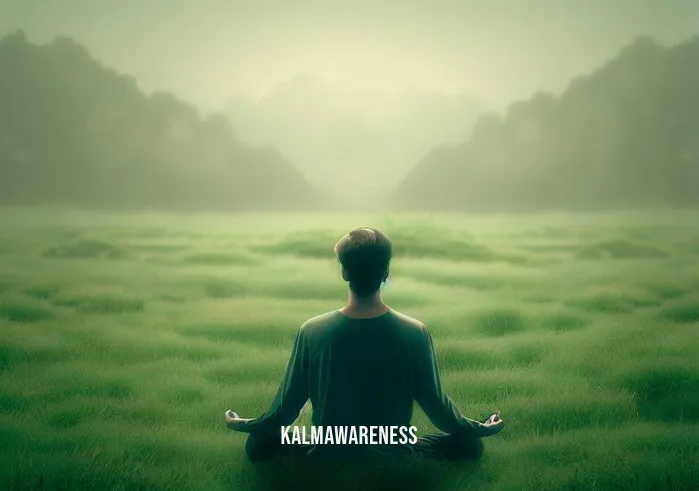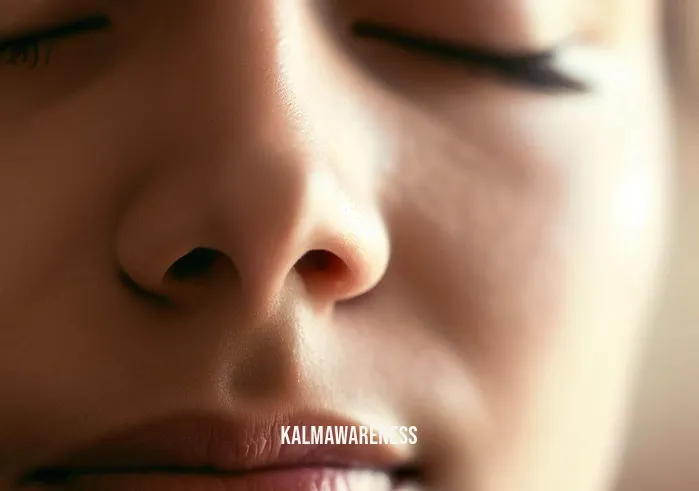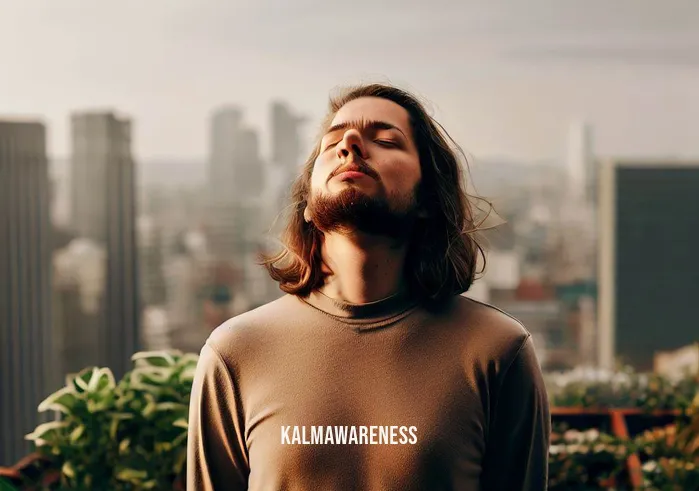Can You Meditate Lying Down? Exploring the Horizontal Path to Mindfulness
The Traditional Picture: Meditation in a Seated Posture
When most people think of meditation, they envision someone sitting in a lotus position, eyes closed, and perhaps chanting a mantra. However, the beauty of meditation lies in its flexibility. Traditionally, sitting upright is encouraged to maintain alertness and focus. But what if you have physical constraints, or what if sitting just isn’t comfortable for you? The question then arises: Can you meditate lying down?
According to some meditation practices like Mindful Hypnobirthing and EMDR Meditation, the answer is a resounding yes. Lying down can not only be an acceptable posture for meditation but can sometimes be recommended.
Why Lying Down Could Be a Good Option for You
Accessibility
For some people, sitting upright for an extended period can be uncomfortable or even painful due to health conditions or injuries. Lying down provides a more accessible alternative.
Ease of Transition to Sleep
If you are exploring practices like Mindful Movement Sleep or the 15-minute Power Nap, lying down can ease the transition from a state of relaxation to sleep.
Enhanced Relaxation
The horizontal position can be inherently more relaxing for many people, which can be particularly beneficial when one is engaging in techniques aimed at how to be peaceful.
The Concerns: Potential Pitfalls of Lying Down
Despite the benefits, there are also some concerns you should keep in mind.
Drowsiness: The most significant issue is the tendency to fall asleep. While practices like Mindful Movement Sleep aim at improving sleep quality, the goal of most meditation exercises is to maintain a state of alert relaxation.
Distraction: In a lying position, it may be easier to give in to distracting thoughts, which contradicts the element of some meditation exercises that involve attaining a peaceful state of mind in which thoughts are not occupied by worry.
Note: If you find it difficult to focus while lying down, you might want to explore other forms of body awareness meditation, such as touching that body part as a way to maintain your attention.
How to Make Lying Down Work for You: Quick Tips
Setting: Choose a comfortable but firm surface. A soft bed may make you fall asleep quicker than you’d like.
Body Position: Keep your legs uncrossed and arms at your sides or on your chest. This can help in how we get deep so fast into a meditative state.
Breathing: Pay attention to your breathing patterns. Breathing is fundamental to practices like Rouse Yoga and Jack Kornfield Meditation for Beginners.
Timed Sessions: To prevent falling asleep, you may want to set a timer. You could start with short sessions and gradually increase the duration.
Guided Meditation: If you are a beginner, you may find it helpful to start with guided meditations designed for lying down. Meditation Made Simple offers some easy-to-follow guides.
So, can you meditate lying down? Absolutely, if you do it mindfully. However, it’s essential to know the potential pitfalls and how to navigate them. Lying down can be a wonderful way to explore a range of practices, from the conventional to the sustainable self-care kind, that contribute to your overall well-being.
In the next segment, we will delve deeper into the types of meditation that are particularly suited for a lying-down position, and how you can incorporate them into your daily routine. We will also explore the science behind why lying down can be effective for meditation, including some interesting insights into 256 Hz benefits. Stay tuned and continue reading!

Lying Down Meditation: Types, Techniques, and Timings
Why the Horizontal Matters in Mindfulness
In our previous discussion, we established that you can indeed meditate lying down, breaking from the conventional seated pose that many associate with meditation. But is this merely a matter of comfort, or does the act of reclining offer something uniquely advantageous? Understanding why lying down can be beneficial brings us closer to realizing the full scope of meditation and how it involves attaining a peaceful state of mind in which thoughts are not occupied by worry.
A Spectrum of Lying-Down Meditation Practices
When meditating horizontally, the techniques you can use vary considerably, offering multiple pathways to inner tranquility.
Techniques for Different Goals
Rest and Recovery: Perfect for a 15-minute power nap, focusing on your breath can rejuvenate your mind.
Mindful Awareness: Techniques such as scanning the body and touching that body part in a mindful manner can help cultivate awareness.
Deep Relaxation: Some practices like mindful hypnobirthing and EMDR meditation are often conducted in a lying-down posture for deep mental relaxation.
Physical Healing: When your aim is more physical than mental, techniques focusing on sustainable self-care can be your go-to.
Spiritual Connection: Finally, lying down can be beneficial in techniques that require you to deeply focus and connect with your spiritual self, such as practices aiming for judgment of the wise.
At a Glance: Types of Lying Down Meditation Practices
| Goal | Technique | Best Time of Day |
|---|---|---|
| Rest and Recovery | Breath Focus | Afternoon |
| Mindful Awareness | Body Scanning | Morning |
| Deep Relaxation | Mindful Hypnobirthing | Evening |
| Physical Healing | Sustainable Self-Care | Anytime |
| Spiritual Connection | Judgment of the Wise | Early Morning or Late Night |
The Timings: When to Meditate Lying Down
The time of day you choose to meditate lying down can also significantly impact your experience. For example, meditation aimed at preparing your mind and body for sleep, like Mindful Movement Sleep, is naturally suited for the evening. In contrast, practices like Rouse Yoga can be ideal for morning sessions, helping you stabilize your energy for the day ahead.
From Teens to Seniors: The Universality of Lying Down Meditation
It’s worth noting that lying down meditation isn’t restricted to any age group. Even teenagers walking the tightrope of high school stress can benefit from this versatile practice. The horizontal posture can be a great starting point for young people new to the discipline of mindfulness, especially since it involves attaining a peaceful state of mind.
Setting the Stage for Chapter 3: What’s Next?
As we’ve seen, meditating while lying down is a highly flexible and adaptable practice. Whether you’re seeking physical healing, mental clarity, or even spiritual connection, there’s likely a lying-down meditation practice for you. In the next segment, we will explore how to make lying-down meditation a sustainable practice. We’ll look into how you can integrate this form of meditation into a busy lifestyle, and we’ll also investigate the 256 Hz benefits that could optimize your lying-down meditation experience. Continue reading to learn how to make this horizontal path to mindfulness a part of your daily routine.

The Transformative Potential of Lying-Down Meditation
Infusing Hope Into Your Meditation Practice
As we’ve previously explored, the practice of meditating while lying down offers a breadth of possibilities, from self-care to spiritual connection. But could it also offer something as abstract yet vital as hope? The reality is that the horizontal path to mindfulness not only provides practical benefits but can also infuse your life with a sense of optimism and inspiration.
“Hope is being able to see that there is light despite all of the darkness.” – Desmond Tutu
This sense of hope comes naturally when you integrate lying down meditation into your routine. The peace and stabilization you gain from the practice can be deeply peaceful, thus fortifying your mental and emotional resilience.
How Mindfulness Spurs Inspiration
“Mindfulness isn’t difficult; we just need to remember to do it.” – Sharon Salzberg
The act of being present can make way for future inspiration. Whether you’re partaking in Jack Kornfield’s meditation for beginners or following a more advanced practice, lying down during your meditation helps you keep in mind the definition of mindfulness: being present, non-judgmental, and engaged with the here and now.
In this state, inspiration flows effortlessly. It’s no longer about grappling with hypothetical futures or past mistakes. Rather, it’s about understanding your place in the cosmos right at this moment.
Taking Inspiration to the Next Level: Deep States and Frequencies
“You are the sky. Everything else is just the weather.” – Pema Chödrön
As you delve deeper into lying-down meditation, you may begin to explore sound frequencies such as 256 Hz benefits. Sound therapies and binaural beats, often incorporated into lying-down meditation sessions, have been shown to inspire creativity and elevate mood. These frequencies can act as an element of some meditation exercises to take your practice to the next level, adding an extra layer of inspirational power.
“The quieter you become, the more you can hear.” – Ram Dass
By integrating these sound frequencies into your practice, the stillness you achieve allows you to hear the subtle inspirations that often go unnoticed in the chaos of daily life.
Sustaining Inspiration: Making Lying Down Meditation A Habit
To keep the well of inspiration flowing, it’s crucial to make lying down meditation a sustainable practice. Understanding how we get deep so fast in such meditative states can inspire you to keep coming back to your practice day after day, fortifying your sense of hope, peace, and inspiration over time.
What Awaits in the Next Chapter
If lying down while meditating has inspired you, you may be wondering, “What’s next?” In our next chapter, we will guide you through a step-by-step process to integrate lying down meditation seamlessly into your daily routine, complete with a focus on Meditation Made Simple. We’ll also explore the use of meditation apps that can make this even more convenient for you.
Now, filled with hope and inspiration, let’s continue on this transformative journey together.

The Nuts and Bolts of Lying-Down Meditation
Simplifying the Complexity
As we venture further into the labyrinth of mindfulness and meditation, you may be wondering: can you really master the subtleties of lying-down meditation without getting lost in its complexities? The good news is that this horizontal practice can be incredibly straightforward. This chapter aims to break down the specifics of lying-down meditation, offering practical steps to help you embrace this accessible form of relaxation and focus.
Elements of Lying-Down Meditation
To understand how this form of meditation works, it helps to identify its core components. These elements can guide you through the maze of information and practices available online and in books.
Key Elements:
- Posture: Unlike traditional seated meditation, lying down offers a natural alignment of the spine. It’s critical, however, to avoid positions that encourage sleep.
- Breathing: Deep, rhythmic breathing is essential. Given the horizontal position, there’s a natural ease in monitoring your breath.
- Focus: Whether you focus on your breath, a mantra, or some form of mindful movement, your attention should be pinpointed to enable deeper states of consciousness.
- Duration: A 15-minute power nap worth of meditation can work wonders, but feel free to extend the time as you get more accustomed to the practice.
Techniques for Lying-Down Meditation
For a more comprehensive understanding, let’s take a look at some techniques often employed in lying-down meditation. Remember, these can be adapted to fit your personal comfort and needs.
- Body Scan: This technique involves mentally scanning your body from head to toe, acknowledging sensations and tensions. Techniques like EMDR meditation can integrate well with this.
- Progressive Muscle Relaxation: Here, you’ll tense and relax muscles in a sequential pattern, enhancing body awareness and relaxation.
- Visualization: Picturing serene scenes can help ease the mind into a state of relaxation. The key is to be vivid in imagination, almost as if you’re physically there.
- Touch Techniques: Methods like “touch that body part” meditation can offer a tangible focus. More on this technique can be found here.
Overcoming Common Challenges
When practicing lying-down meditation, you may encounter some hurdles. Being prepared can make the journey smoother.
- Difficulty in Maintaining Focus: The comfort of the posture may make it easy to drift into sleep. Rouse Yoga techniques can be useful in maintaining alertness.
- Physical Discomfort: Placing a cushion under your knees or head can alleviate discomfort.
- Overthinking: It’s common to have the mind wander during meditation. The judgement of the wise is to kindly bring your focus back without berating yourself.
Lying-Down Meditation for Special Groups
Meditating while lying down isn’t just limited to adults; it has shown positive effects on younger populations like teenagers. This method can also be incorporated into specialized mindfulness practices like mindful hypnobirthing for expecting mothers.
Teasing the Final Chapter: Sustainability and You
By now, you should have a well-rounded understanding of what lying-down meditation involves and how it can be tailored to meet individual needs. But how do you make this practice a sustainable part of your life? How do you incorporate it into a sustainable self-care routine? That’s what we’ll dive into in our final chapter. So, if you’re excited to turn lying-down meditation into a consistent source of calm and focus in your busy life, don’t miss what comes next.

Lying Down to Stand Up: Closing the Circle on Meditative Repose
A Journey of Horizontal Tranquility
Here we are, at the end of our exploration into the intriguing realm of lying-down meditation. From understanding its nuances to breaking down its techniques, we’ve covered a lot of ground—though, metaphorically speaking, we’ve been lying down the whole time! The essential takeaway is this: you can, indeed, meditate while lying down. It’s a versatile and powerful method to bring stillness, mindfulness, and serenity into your life, while possibly enhancing your element of some meditation exercises.
The Power of Stillness
One of the key benefits we’ve delved into is the deep sense of rest lying-down meditation offers. In a world obsessed with busyness, where stress is almost a badge of honor, the horizontal position serves as a symbol of defiance. It whispers to us that it’s okay to pause, that it’s necessary to be peaceful. This practice involves attaining a peaceful state of mind in which thoughts are not occupied by worry. So, if you’ve ever been inquisitive about how to cultivate internal serenity, you’ve got your answer.
The Auditory Experience
An interesting aspect to add to your lying-down meditation is sound. The humming vibration of a 256 Hz tone, for example, can be instrumental in deepening your meditative state. For more on the benefits of specific sound frequencies during meditation, head over here.
Looking Back, Looking Forward
Let’s summarize what we’ve learned:
- Lying-down meditation is not only possible but also incredibly rewarding.
- The practice accommodates a plethora of techniques, from body scans to visualization.
- Special groups, such as teenagers and expecting mothers, can also benefit from this form of meditation.
As you integrate these practices into your daily life, remember that, just like in life, the road to mindfulness isn’t a sprint but a marathon. Don’t hesitate to revisit these sections or explore other content to keep in mind definitions and strategies that resonate with you.
Your Next Steps
If you’ve found this journey enlightening, you’ll be thrilled by the plethora of related articles in our magazine. For those who seek to deepen their practice, you might want to look into Jack Kornfield’s Meditation for Beginners or find out how we get deep so fast in meditation.
Thank You, Dear Reader
In closing, a heartfelt thank you for accompanying us on this journey. Rest assured, we’ll continue to offer more insights and guides to enrich your life in our future editions. After all, as the saying goes, the journey is the reward. And if lying down makes the journey peaceful, then why stand up?
So, whether you’re a seasoned practitioner or someone who just found out that you can meditate lying down, the field is wide open. It’s a space of peace, a moment frozen in time, waiting for you to step—or rather, lie—inside.
Here’s to many more peaceful moments lying down in your future meditative journeys. Cheers!





